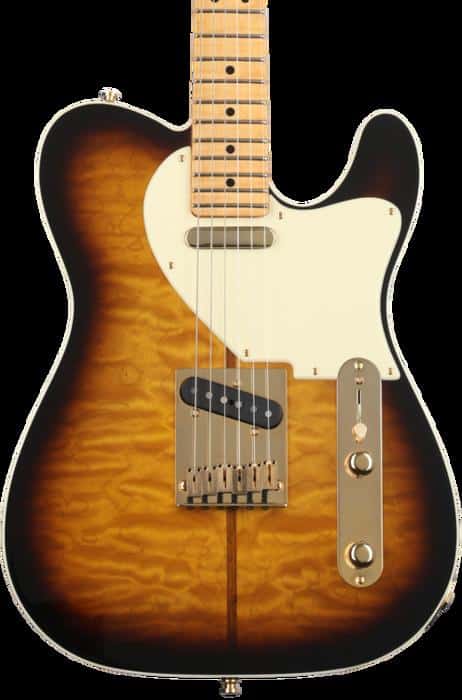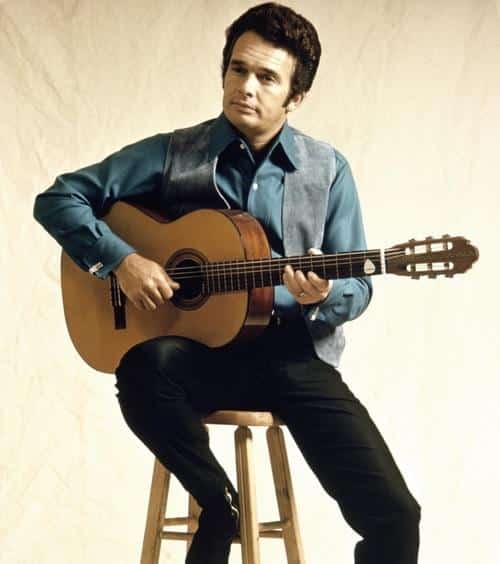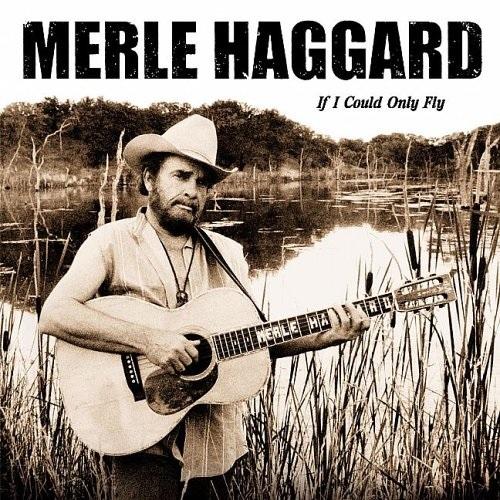There’s an indescribable magic in the touch of a musician on an instrument – a mystic bond that plays out in the music they create. And when it comes to the realm of country music, few relationships are as riveting as the one between Merle Haggard and his guitar. The inextricable connection of the two was such that one could argue, it was his guitar that somehow became an extension of himself, an echo of his soul.
When Merle stroked those strings, something extraordinary happened – the birth of sounds that spoke to the American underdog, the blue-between-the-greys. It was a symphony of emotions, molded masterfully by Merle’s hands on his guitar, that forever marked a unique chapter in the annals of country music.
As someone with years of experience designing and constructing stringed instruments, the lure of examining and appreciating the tonal aspects of Merle’s guitar is irresistible. How were they varied? How did that translate into Merle’s music? How did it shape and redefine the genre itself? In this discourse, we embark on a journey to retrace the steps of the legend, uncovering the combined magic of the man, his music, and of course, his beloved instrument.
This article delves into the vibrant world of Merle Haggard and his guitar, exploring how it influenced the music he gifted us. Stay tuned as we unravel the pages of country music history, lined with rhythm and rough-edged tales, echoing in the strains of Merle Haggard’s guitar.
The Classic Instruments of Merle Haggard

As a seasoned luthier, I have had the privilege of interacting with, and appreciating, some of the most iconic guitars in musical history. In particular, two brands consistently stand out – the Fender Telecaster and Martin acoustic. These classic instruments formed the bedrock of unique sounds emanating from artists of diverse genres, one of whom was the country music legend, Merle Haggard.
Each guitar has its distinct character and resonance, and it takes an experienced hand and a trained ear to really understand their language. And therein lies the answer to the question, What made these old-school Fender Telecasters and Martin guitars central to Haggard’s distinctive sound? Merle had both the experienced hand and the keen ear, which allowed him to seamlessly blend the strengths of these different guitar models into a signature sound that became his artistic fingerprint.
When it comes to Martin guitars, legends often surge from the sweet resonance of their acoustic models. Haggard was known to be particularly fond of using a Martin D-28, a solid spruce top guitar that is known for its strong, rich sound. He used it as a dynamic road companion throughout his musical journey, complimenting the acoustic set pieces with their robust, stable and melodic tones.
Then there is the Fender Telecaster. Haggard was also noted for his genuine attachment to his ’57 Fender Telecaster. A cornerstone of modern country music, the Fender Telecaster, most notably in Haggard’s hands, would come to be cherished for its distinctive twang, clarity and the biting leads it uniquely delivers. Its geometric simplicity, reliability, and iconic sound found a place in the repertoire of many a great musician, and Merle was no exception.
In my extensive experience as a luthier, one of the most intriguing facets of guitar playing comes in the form of signature guitar models. It’s a deep honor and a testament to an artist’s musical journey, to have a model stamped with their name. Much to his acclaim, Haggard had not one, but two guitars branded in his name – a Fender Custom Shop Merle Haggard Tribute Telecaster and the Martin HD-28 Merle Haggard Signature Edition.
His Fender tribute Telecaster was built replicating his beloved ‘57 model itself, while the Martin Signature Edition was a reimagining of his favorite D-28, this time with a polished bearclaw Engelmann spruce soundboard mounted on the artist’s signature Indian rosewood body.
These classic instruments were not merely tools. They were Merle’s companions, allies, and confidants. Rooted deeply in Haggard’s unique sound was his ability to extract the essence, the spirit, and the soul of these guitars. In essence, the Fender Telecaster and Martin acoustics were partners to Haggard’s musical vision. They acted as silent teachers, revealing complex layers of tonal dynamics and giving his words an amplified voice that continues to echo through the country music landscape.
In the musical journey of Merle Haggard, these instruments were not just causal catalysts for making sound – they were conduits for expressing the timeless narratives of his life and times.
Merle’s Guitar Style and Technique

Just as each musician leaves a distinct imprint, each city has a particular sound that it reverberates, shaping the very foundation of music genres. For country music, the unmistakable twang and rawness of the Bakersfield sound derived from the city it originates, Bakersfield, California, left an indelible impact. This sound set the path for several musicians, and on top of that list, undoubtedly, is Merle Haggard.
As a committed researcher of instrument acoustics, exploring Merle Haggard’s iconic style and the Bakersfield sound is an intriguing journey for me. There’s a palpable energy in his playing, resonating through his guitar, that captivates the listener. It isn’t merely about playing the notes – the Bakersfield sound is about capturing the spirit of both the music and the environment whence it burgeons.
So, how did Merle Haggard’s distinct guitar style and the Bakersfield sound influence Country music?
I’ve often pondered this question, pouring over countless hours of recordings, live performances, and interviews. It’s a versatile blend of components, from Haggard’s guitar playing style to the undeniable influence of his mentor Roy Nichols, and invariably, the culturally rich environment of Bakersfield.
When I listen to Haggard’s guitar work, that distinctive combination of raw energy blended with a sublime tenderness stands out. His ability to alternate between aggressive strumming and soft picking illustrates skill seamlessly. This is most evident in hits such as the Mama Tried guitar intro, where Haggard adeptly uses chords to accent various beats, thereby creating a distinctive rhythmic pattern.
Unquestionably, a significant ingredient of his style was the influence of Roy Nichols. Nichols’ contribution to Bakersfield sound was extraordinary, and his mentoring role in shaping Haggard’s guitar style is integral to understanding his musical journey. His rapid-fire guitar licks, doubled by Haggard, became a unique characteristic of Merle’s music.
Moreover, the Bakersfield sound itself, a fine blend of honky-tonk and rock and roll, played a significant role. Infused with the raw and rebellious spirit of the city’s oilfield workers and truck drivers, the sound seamlessly juxtaposed the smooth and polished Nashville sound. This sonic fingerprint is clearly visible throughout Haggard’s discography, giving his music an earthy realness that resonated with the working class.
I wholly believe that it was this unique amalgamation of factors that shaped Haggard’s distinct guitar style and enabled him to influence country music in such a profound and lasting way. It wasn’t just that he was an exceptional musician; Haggard embodied a sound, a spirit that brought the essence of Bakersfield to the broader country arena, challenging the status quo and changing the game forever.
As we swerve into the next section, I look forward to delving more into Merle Haggard’s status as an outlaw country guitarist, a persona that emerged from a unique confluence of his personal experiences, his musical style, and the socio-political milieu of his time. By understanding Haggard, we not only understand a music legend but also unravel the dynamic narrative of the outlaw country sub-genre—it’s a fascinating exploration. So, let’s strum on.
Historical and Collector’s Perspective

If you’ve been journeying with me through this exploration of Merle Haggard’s iconic guitars, you’d know about the acoustic warmth of his 1965 Fender Telecaster or the vibrant resonance of his Tuff Dog Telecaster. But are you aware of the collectors’ value and the historical significance that accompanies these guitars? The narrative of these instruments extends beyond guitar sessions, stretching richly into cultural tapestry and collectors’ prized assets.
With my experience in managing the Liutaio David Garcia Lutherie Information website, I’ve gained a nuanced understanding of the historical and collector’s perspective on guitars. Especially those wielded by legends like Haggard whose music reverberates generations later. There’s a depth to these stories, like the layers of nitrocellulose lacquer finish on these vintage pieces, each application adding character and enriching the guitar’s narrative.
When referencing Merle Haggard’s guitars in forums like Guitar Forum or my blog posts at Guitar Blog, the interest they generate is often intense. Viewed from the lens of a historian, they are milestones in the journey of guitar design and musical evolution. They embody a particular era’s ethos, reflect its technology, and resonate with the artist’s soul. Seen from the collector’s standpoint, these guitars acquire an extraordinary allure. They are pieces of history, artifacts of passion and craft that carry the echo of the chords strummed by the legend himself. Each collector’s piece holds its unique slice of time, sealed in its wood grain, enclosed within the strum of its strings.
I recall a poignant story of a collector from Nashville who acquired one of Merle Haggard’s acoustic guitars. He confessed that owning that piece felt like possessing a small part of the prodigious legacy left behind by Merle. The excitement in his voice as he described playing his first chords on that guitar was profoundly moving. It was a vivid testament to the connection these collector guitars can forge and symbolizes the continuum of the passion and craft of music.
Stories like these highlight the extraordinary link between an artist and his instruments. The guitars don’t merely retain a financial value but are reflections of the artist’s journey, amplifying the emotional equity even more. Many Haggard aficionados would arguably pay a princely sum to experience the feel of his Stratocaster, bask in its tonal magic, understand the edges worn smooth by his relentless pursuit of perfection.
When we delve into the historical and collector’s perspective of Merle Haggard’s guitars, we are exploring the juxtaposition of tangible artistry and intangible heritage. We are not merely examining an instrument but unraveling layers of sound, texture, culture, and emotion. Yes, Merle’s guitars are about crafting sound, but they are equally about echoing stories, inviting us to explore a magnificent play of history and value.
Stay tuned as we continue to delve further into the life and music of Merle Haggard in the upcoming section – Merle Haggard: The Outlaw Country Guitarist. How can we better appreciate his rebellious spirit and undisputed genius without understanding the tools that gave voice to his extraordinary talent?
Merle Haggard: The Outlaw Country Guitarist

Coming from first-hand knowledge, having spent years studying and crafting stringed instruments, I can say confidently that a musician’s persona heavily shapes his or her musical style, and Merle Haggard was no exception. His outlaw persona deeply influenced his distinctive guitar music, leaving an indelible mark on country music. Drawing a Merle Haggard tribute isn’t just about understanding his music and guitar style; it’s about understanding the man.
Haggard was not just a country music singer; he was the embodiment of outlaw country. Growing up in a converted railway boxcar during the Great Depression, experiencing a troubled youth, and serving time in prison, Merle lived and breathed the rebellious, outsider spirit of outlaw country. He didn’t just sing about the trials and tribulations of the everyday American; he lived them.
So what made Merle Haggard the symbol of outlaw country, and how did this influence his guitar music? Haggard’s music was as raw and rough around the edges as his life was. His songs echoing tales of hardship and struggle, paired with a no-apologies delivery, mirrored the defining attributes of the outlaw life. This outlaw spirit permeated his guitar music. Haggard played with an intensity and rawness that resonated with people who lived the same hard-knock life.
Coming back to the essence of Merle Haggard’s music, it was always about authenticity. With Haggard, what you heard was what you got. The bite in his guitar, the twang in his voice, and the honest lyrics were all reflections of the man himself. It’s this raw authenticity that helps Haggard’s music resonate with fans even decades after his prime. His style wasn’t about intricate guitar solos or flashy theatrics; it was about telling a story through the strings of his guitar, a narrative that resembled his own.
Haggard’s guitar playing was as straightforward as he was. His chord choices and melodies were often simple, yet they cut to the heart of the listener with their sincerity. Never one for overcomplicating things, he let the lyrics and emotions drive his music, using his guitar as the vehicle to deliver his message to the world.
When crafting a Merle Haggard tribute, it’s essential to honor this identity and ethos. Outlaw country isn’t just a music genre; it’s a way of life, a philosophy. And Merle Haggard didn’t just create music, he held up a mirror to the world. His guitar was a tool for delivering his truth – sometimes painful, always honest. In my years of studying and crafting stringed instruments, few artists have impacted me as much as this unsung hero of outlaw country.
As we further explore the essence of Merle Haggard’s guitar music, I invite you to immerse yourselves in the world of this country legend. See the world through his lens and tune your ears to the inspiration behind every strum of his guitar. This journey is as much about understanding the man as it is about mastering his music.
FAQs
Who was Merle Haggard?
What type of guitar did Merle Haggard play?
How did Merle Haggard’s guitar contribute to his music?
Conclusion
How remarkable is it that one man’s guitar style can spark a signature sound, inspiring many guitarists for generations to come? Merle Haggard, an indisputable titan of country music, achieved just that with his fine-tuned guitar playing style. Utilizing instruments like the Fender Telecaster and Martin guitars, Haggard fused tradition and innovation, crafting an influential legacy that defining the soundscape of country music.
Haggard’s love affair with his guitars, his precision, and keen ear for tonality underscore the essence of his craft. His iconic setups and modifications— especially on the Martin guitars— enhanced his expressive playing, impressively underscoring how technique and instrument intertwine intricately within a musician’s sound. The evidence is all around us in the form of scores of inspired guitarists following in Haggard’s footsteps.
My extensive knowledge about the design and sound of stringed instruments has allowed me a deep, rewarding dive into Merle Haggard’s musical journey. Through this exploration, we’ve journeyed through the origin of the outlaw country guitarist’s signature style, his classic instruments, and his enduring impact on aspiring artists and guitar enthusiasts alike. To me, this has been more than just an exploration of an artist’s work but a testament to the transformative power of music and the magic that is the guitar.
